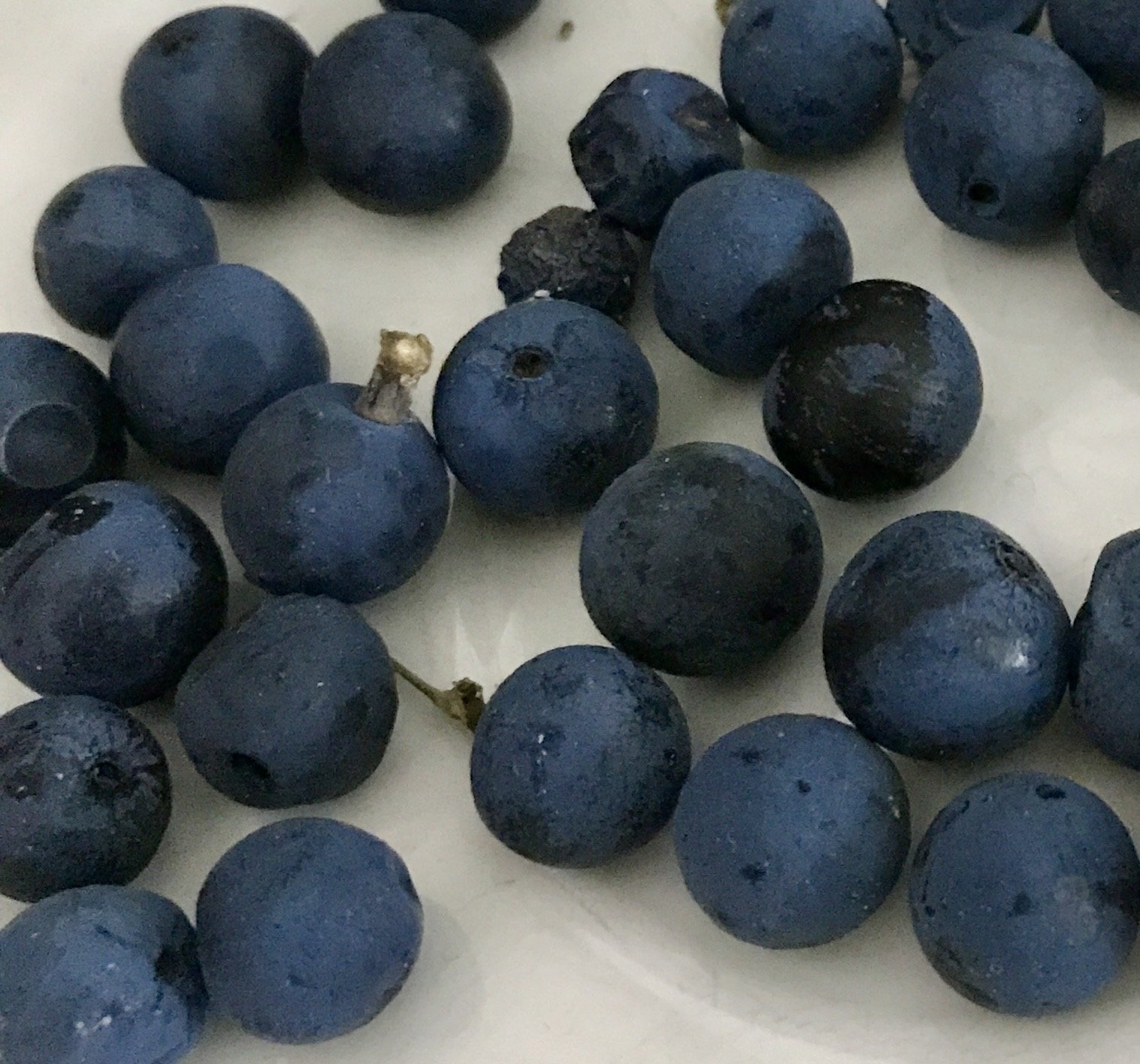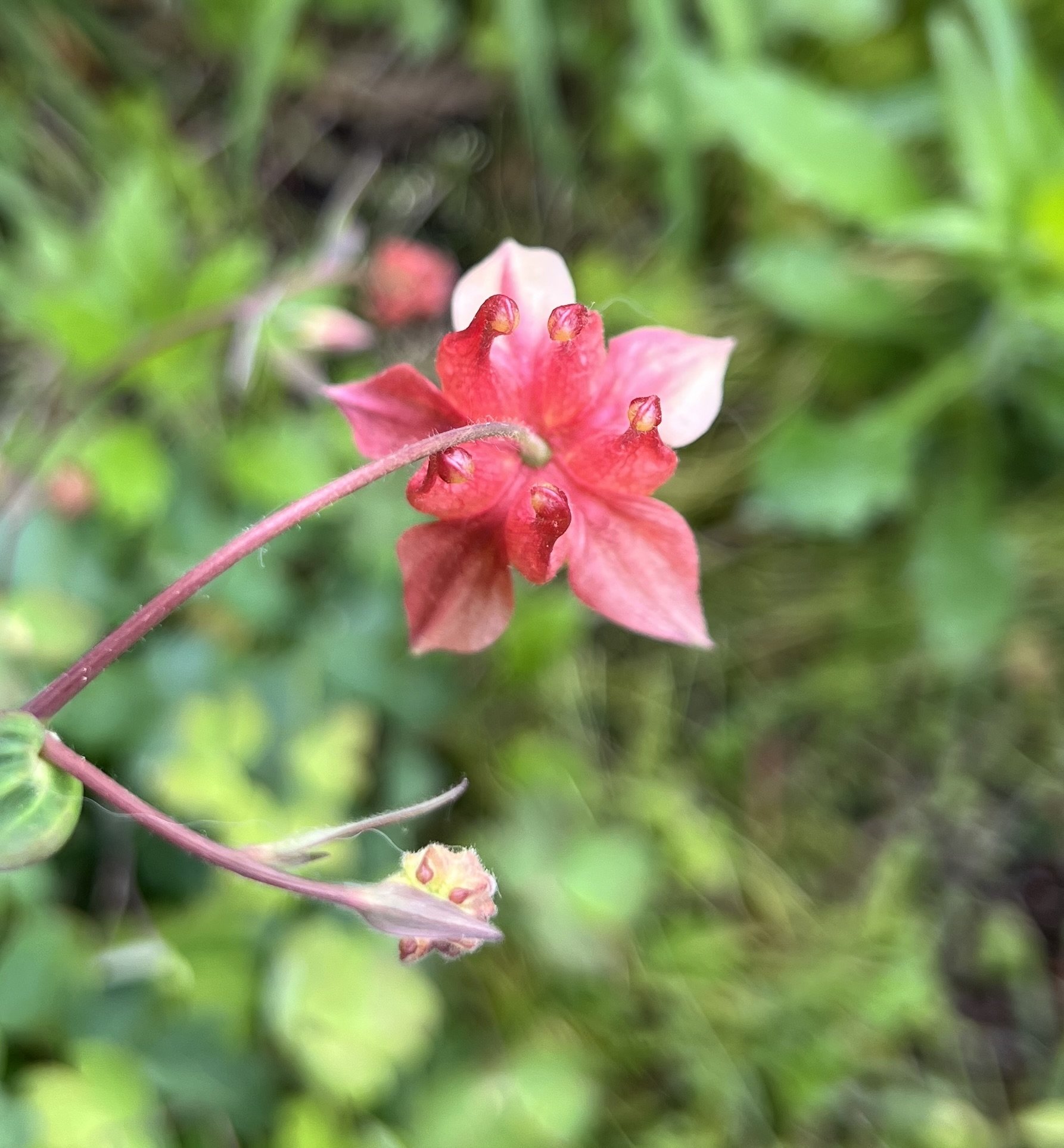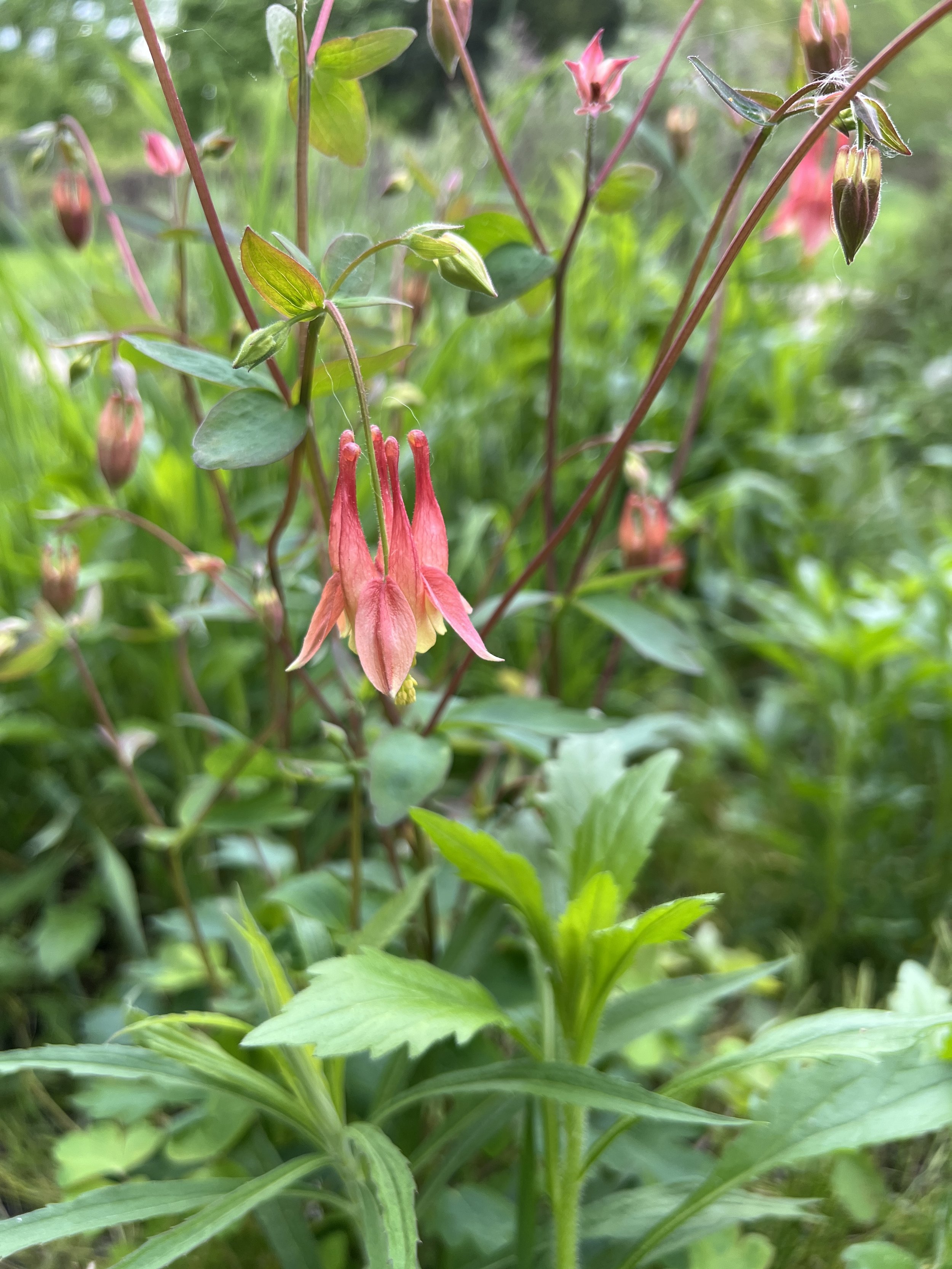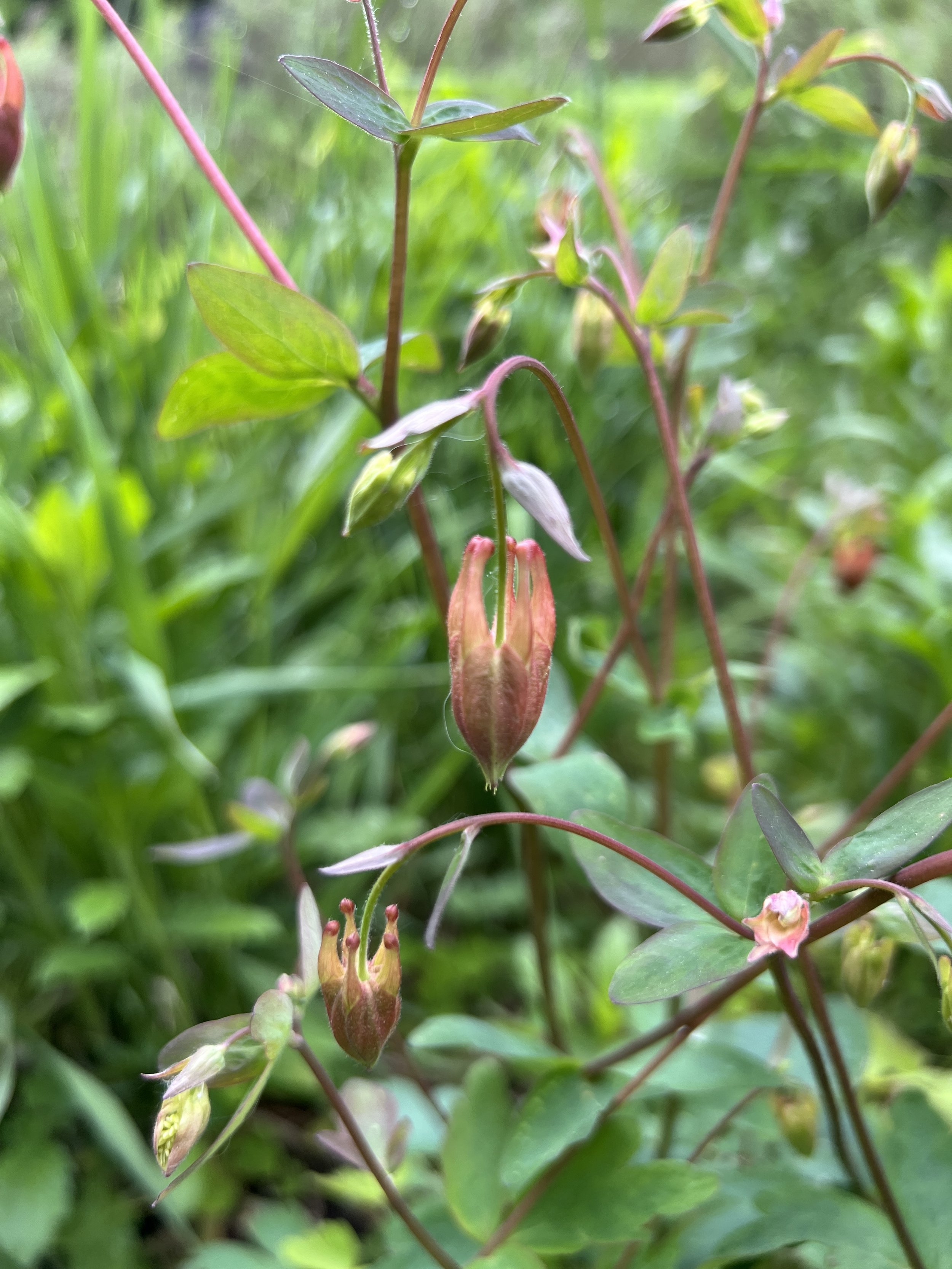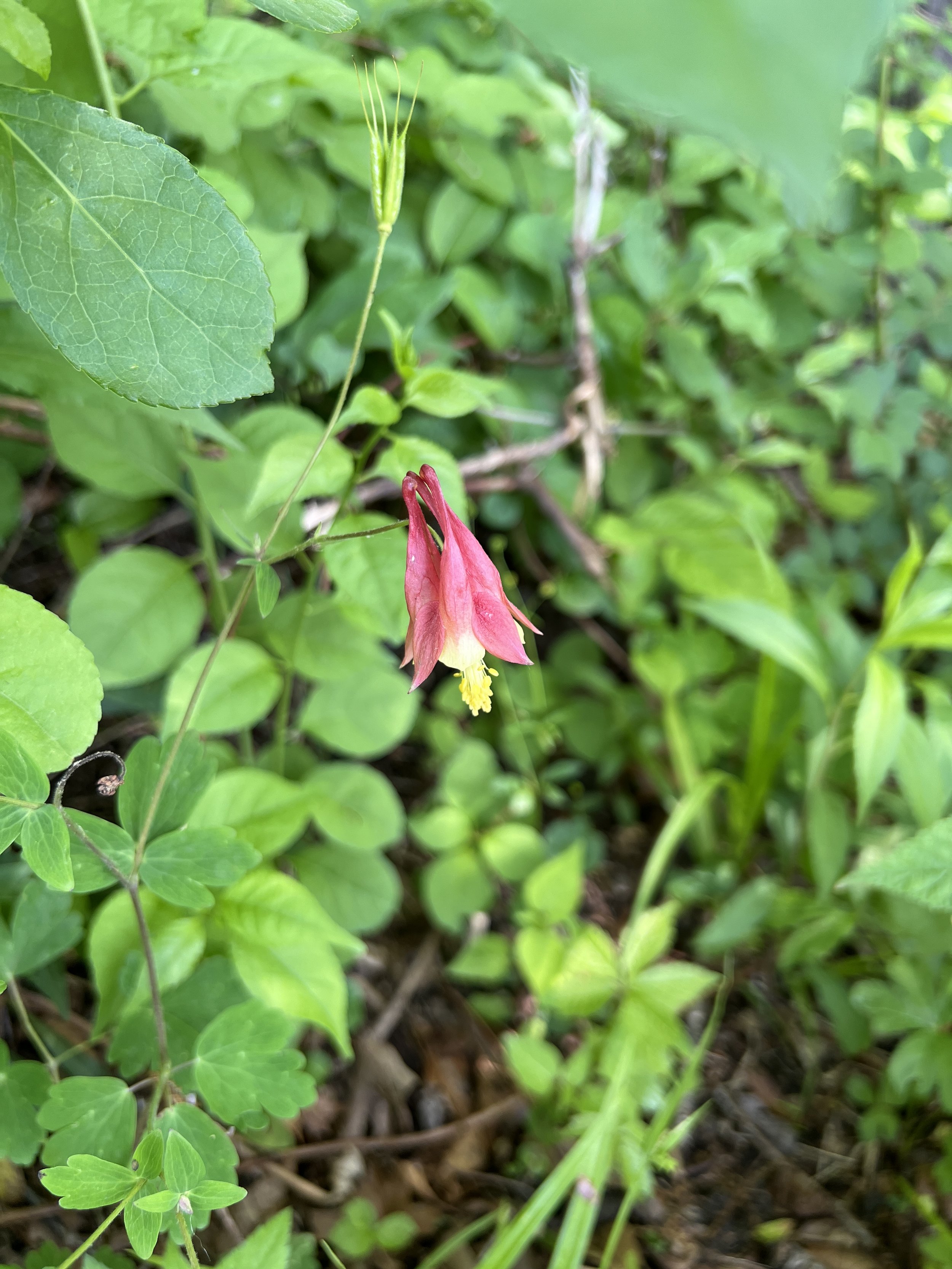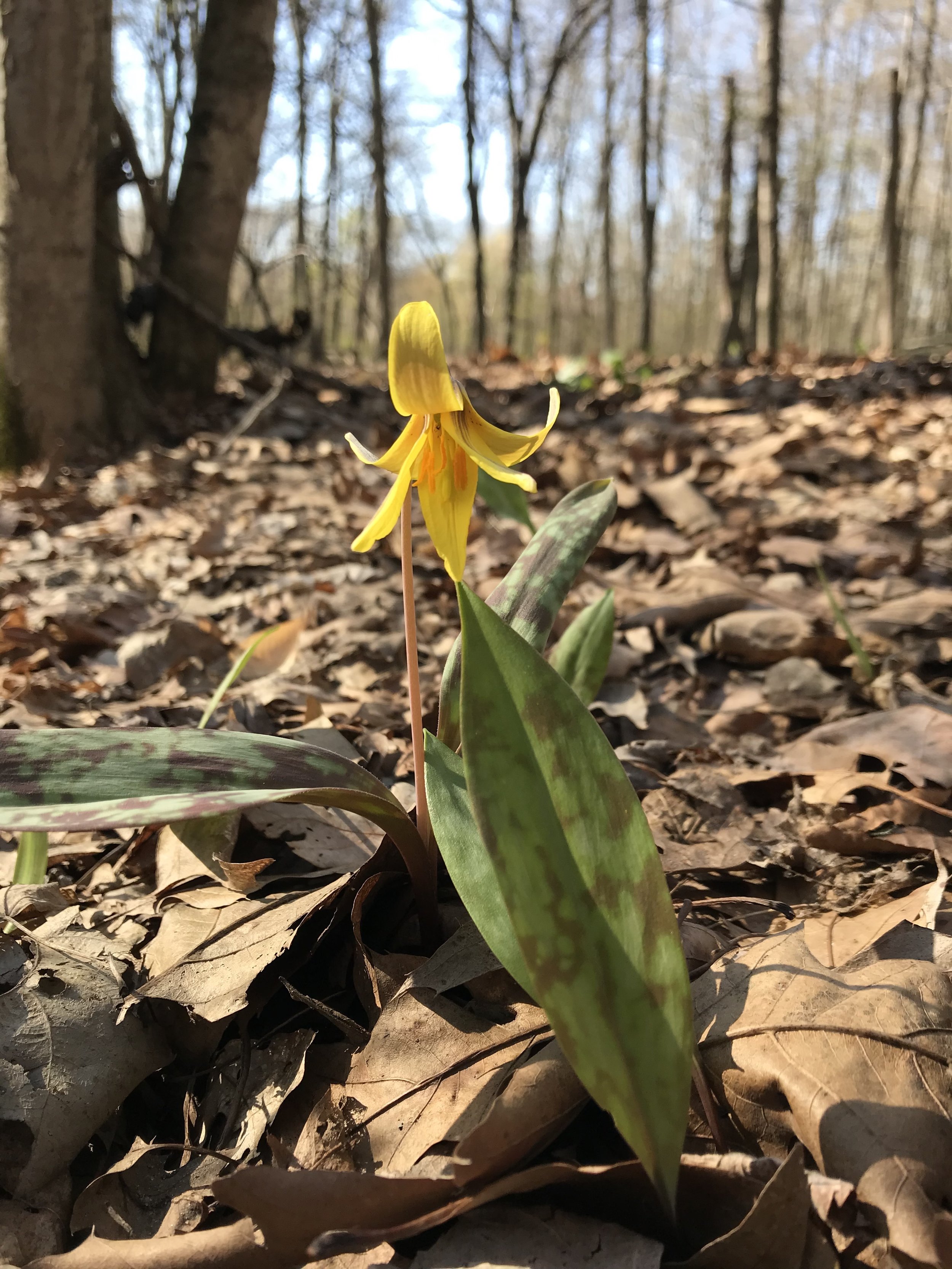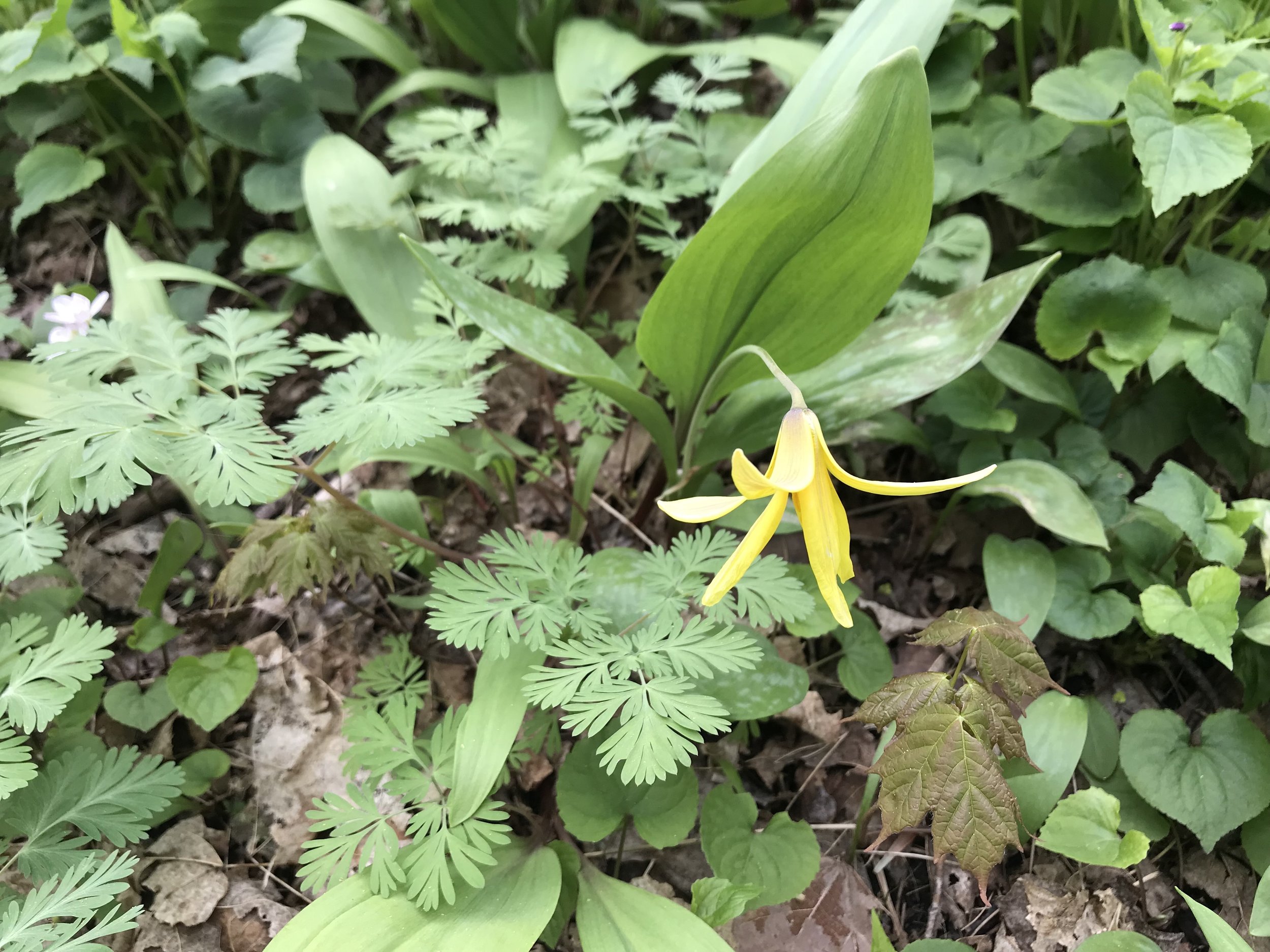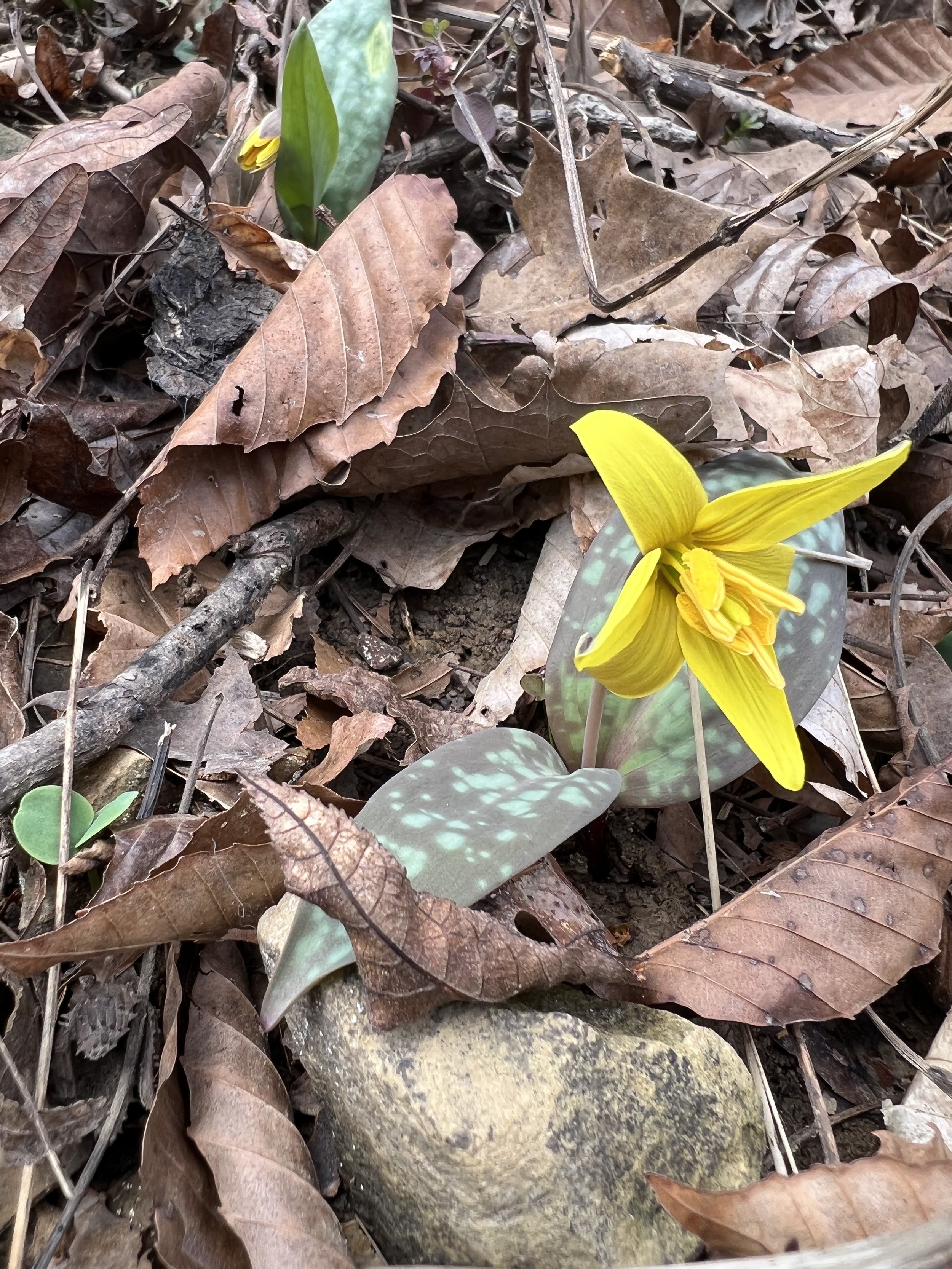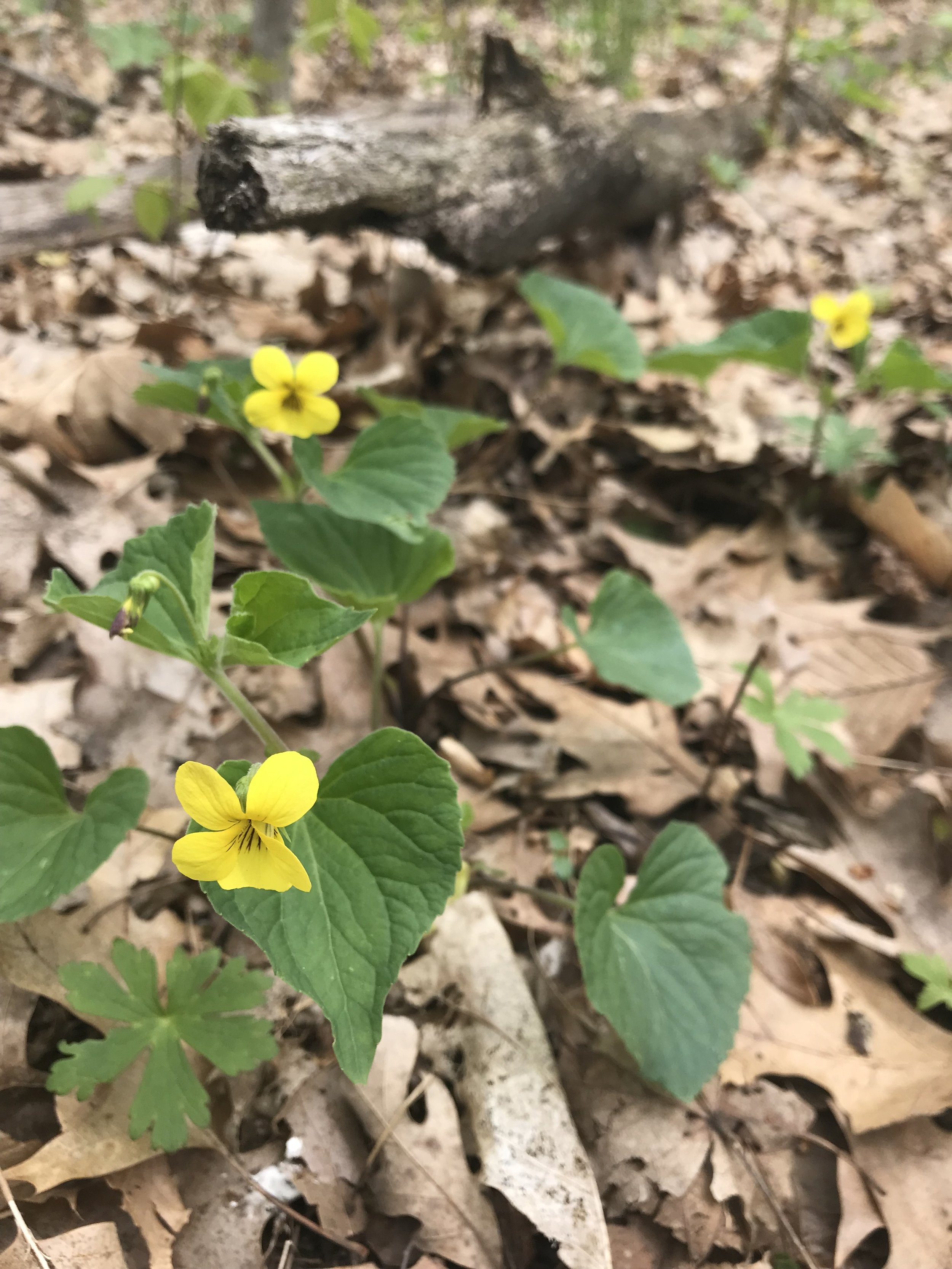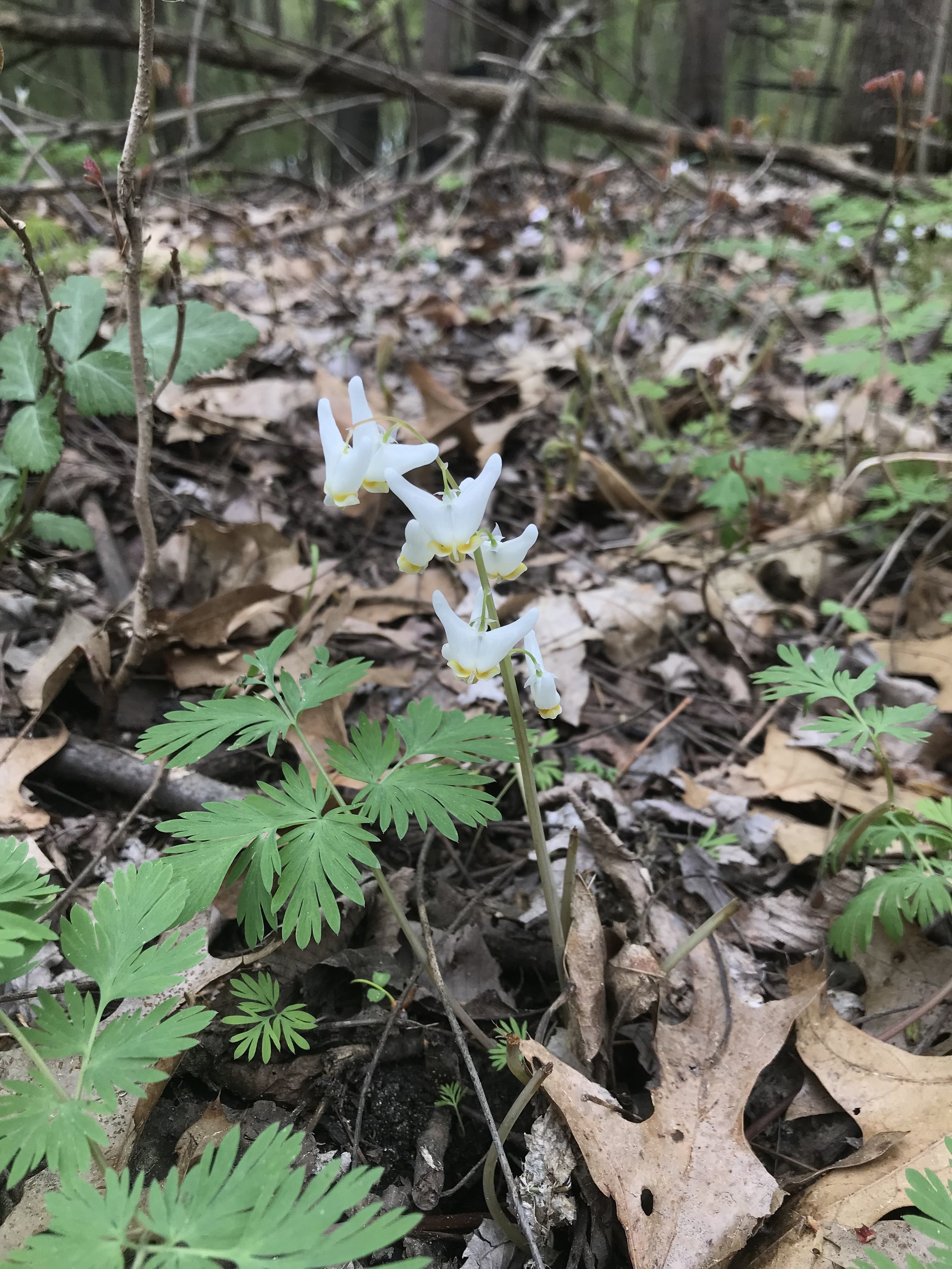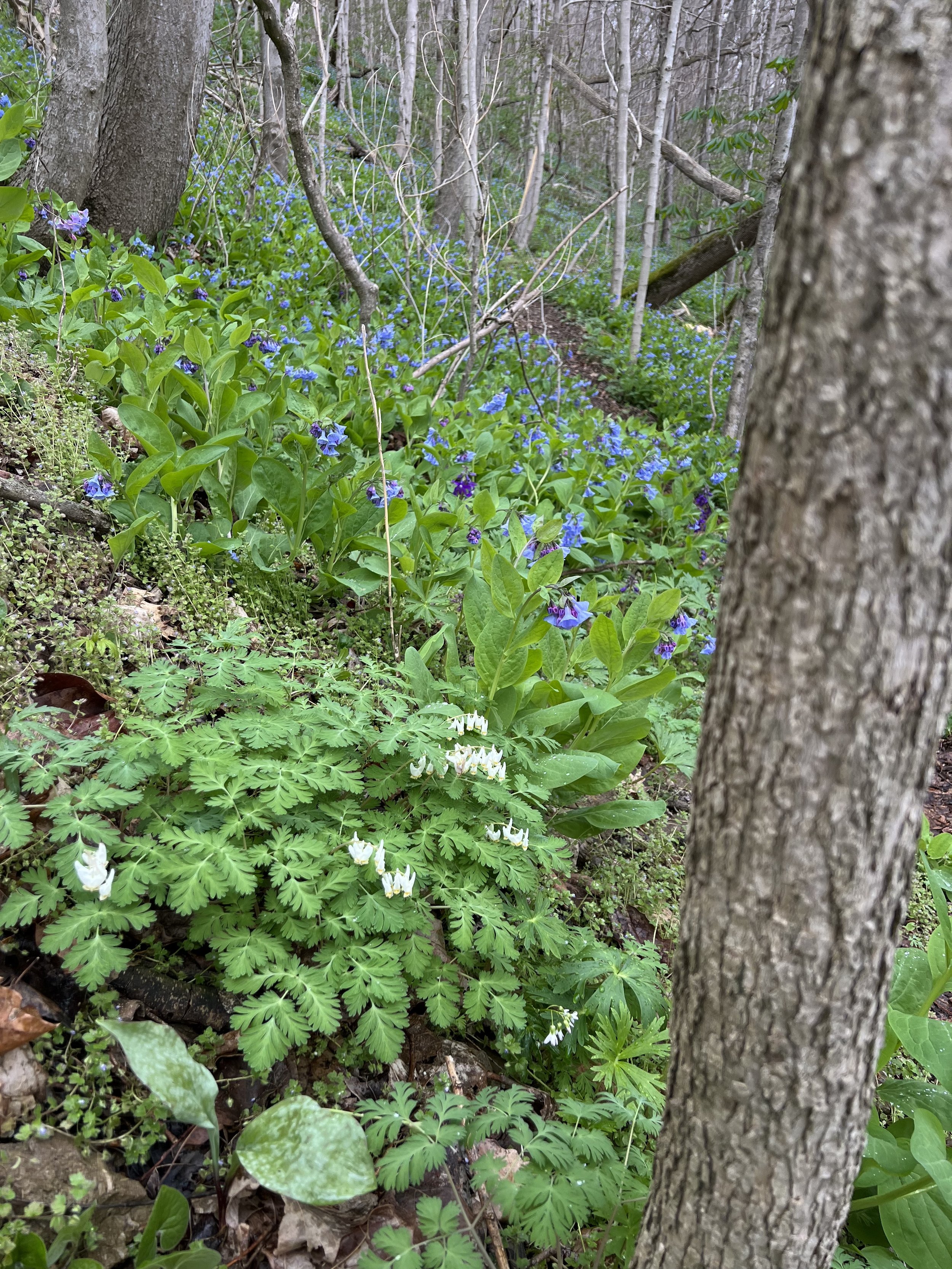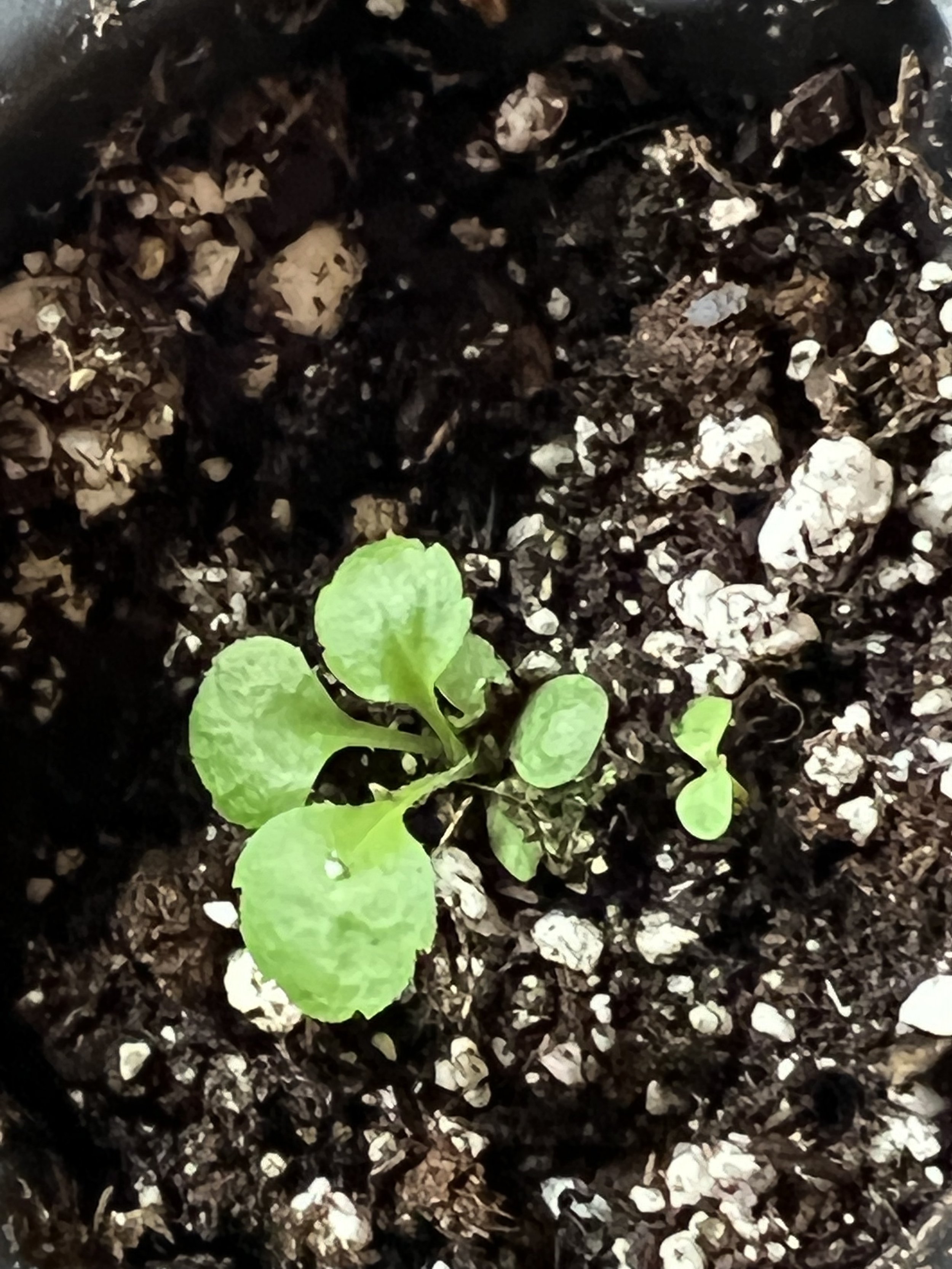Blue Cohosh (Caulophyllum thalictroides)
Blue Cohosh emerges from the forest floor like bluish-purple alien fingers. The flowers are green-yelow and in small clusters. Leaves have lobes similar to the meadow rues (and thus the species epithet “thalictroides.”
Once flowers have been pollinated, green “berries” develop. They are actually seeds with a berry-like covering. At first they are round and green with a waxy cover and then they eventually turn bright blue by late summer. The the seeds are held higher than the bushy foliage and easily contrast from the green. The look can be quite stunning depending on the light in the woods.
Blue cohosh tends to spread in a fertile woodland by seed and slowly by rhizome. It is a long-lived plant. Seeds are toxic and should never be eaten by humans.
This plant is slow to germinate and grow, growing underground the first year and only pushing up to the surface of the soil the second or third year.
Blue Cohosh (Caulophyllum thalictroides)
Michigan Flora reference page for state distribution: Blue Cohosh
height: 1-2 feet
bloom time: April-May
soil: medium, rich
sun: partial, shade
plant spacing: 15”
flower: yellow
life cycle: perennial
family: Berberidaceae
Blue Cohosh emerges from the forest floor like bluish-purple alien fingers. The flowers are green-yelow and in small clusters. Leaves have lobes similar to the meadow rues (and thus the species epithet “thalictroides.”
Once flowers have been pollinated, green “berries” develop. They are actually seeds with a berry-like covering. At first they are round and green with a waxy cover and then they eventually turn bright blue by late summer. The the seeds are held higher than the bushy foliage and easily contrast from the green. The look can be quite stunning depending on the light in the woods.
Blue cohosh tends to spread in a fertile woodland by seed and slowly by rhizome. It is a long-lived plant. Seeds are toxic and should never be eaten by humans.
This plant is slow to germinate and grow, growing underground the first year and only pushing up to the surface of the soil the second or third year.
Blue Cohosh (Caulophyllum thalictroides)
Michigan Flora reference page for state distribution: Blue Cohosh
height: 1-2 feet
bloom time: April-May
soil: medium, rich
sun: partial, shade
plant spacing: 15”
flower: yellow
life cycle: perennial
family: Berberidaceae
Blue Cohosh emerges from the forest floor like bluish-purple alien fingers. The flowers are green-yelow and in small clusters. Leaves have lobes similar to the meadow rues (and thus the species epithet “thalictroides.”
Once flowers have been pollinated, green “berries” develop. They are actually seeds with a berry-like covering. At first they are round and green with a waxy cover and then they eventually turn bright blue by late summer. The the seeds are held higher than the bushy foliage and easily contrast from the green. The look can be quite stunning depending on the light in the woods.
Blue cohosh tends to spread in a fertile woodland by seed and slowly by rhizome. It is a long-lived plant. Seeds are toxic and should never be eaten by humans.
This plant is slow to germinate and grow, growing underground the first year and only pushing up to the surface of the soil the second or third year.
Blue Cohosh (Caulophyllum thalictroides)
Michigan Flora reference page for state distribution: Blue Cohosh
height: 1-2 feet
bloom time: April-May
soil: medium, rich
sun: partial, shade
plant spacing: 15”
flower: yellow
life cycle: perennial
family: Berberidaceae





